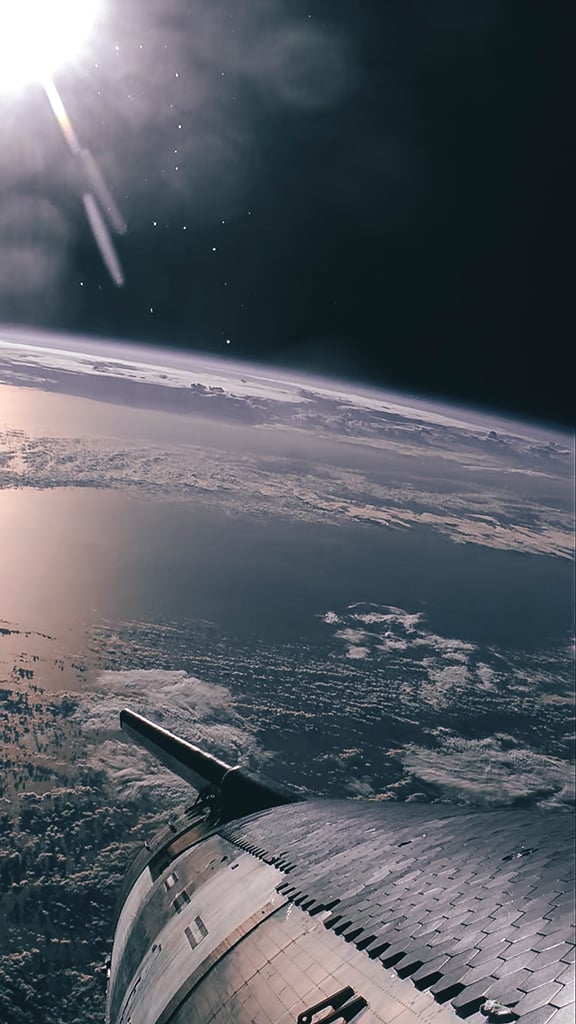
SpaceX’s third Starship-Super Heavy flight test lifted off from Boca Chica Beach, Texas, on March 14. The planned 64-min. mission ended about 15 min. early when the Starship was lost during reentry.
For the record, SpaceX’s third Starship-Super Heavy integrated flight test ended like its predecessors, with the FAA opening a mishap investigation after both vehicles were destroyed prior to the end of their planned missions.
But integrated flight test-3 (IFT-3), which took place March 14, was fundamentally different than last year’s IFT-1 and IFT-2 because the Starship spacecraft not only reached its intended trajectory, but also completed most of the test milestones, paving the way for future operational missions.
- SpaceX nails hot-staging separation for a second time
- Ship roll prompted cancellation of engine restart test
“It was an incredibly successful flight,” SpaceX President and Chief Operating Officer Gwynne Shotwell said March 19 during a panel discussion at the Satellite 2024 conference. “We hit exactly where we wanted to go.
“Boost phase was beautiful, and we got the relight of the booster engines to come back,” she added. “We didn’t complete that part of the phase, but . . . we’ll figure out what happened on both stages and get back to flight hopefully in the beginning part of May.”
The 396-ft.-tall Starship-Super Heavy rocket lifted off from SpaceX’s Boca Chica Beach, Texas, spaceport at 9:25 a.m. EDT March 14, less than a day after receiving clearance for IFT-3 from the FAA. All 33 of the Super Heavy’s methane-fueled Raptor engines fired, repeating a test objective first demonstrated during the IFT-2 on Nov. 18.
After a full-duration burn, 30 Super Heavy engines shut down as planned, leaving three firing as the Starship upper stage lit its six Raptors to fly off the booster successfully, repeating a hot-staging separation also first accomplished during IFT-2.
The Super Heavy first stage separated 2 min. 49 sec. after launch, completed a flip maneuver and restarted its 13 inner engines for a boostback burn, setting the stage for a soft splashdown in the Gulf of Mexico.
During the Super Heavy’s flight in November, the booster was destroyed during the boostback burn when an engine exploded after losing pressure in its oxidizer turbopump due to filter blockage in the liquid oxygen supply. That set up a cascade of engine shutdowns, and the rocket was destroyed about 3.5 min. after liftoff some 60 mi. above the Gulf of Mexico.
On IFT-3, the Super Heavy—designated Booster 10—flew for nearly 7 min. and relit some of its engines for a planned landing burn, setting up a soft splashdown. That was not successful, and Booster 10 was destroyed about 1,516 ft. above the ocean.
SpaceX made even more progress with the Starship upper stage during IFT-3. On its previous flight, the Starship spacecraft failed prior to reaching its intended suborbital trajectory. During IFT-2, SpaceX had loaded extra liquid oxygen on the vehicle to simulate payload mass and was venting the propellant when a leak occurred, sparking explosions and fires. The vehicle broke apart about 7 min. after liftoff at an altitude of approximately 93 mi. “Ironically, if it had [had] a payload, it would have reached orbit,” SpaceX CEO and Chief Technology Officer Elon Musk told employees on Jan. 12.
For IFT-3, SpaceX targeted a steeper trajectory to buy time for a trio of engineering objectives and to set up a water landing without the need for a reentry burn. “We wanted to make sure we could passively come back on a trajectory we could count on if we didn’t relight the second stage engine a second time to reenter,” Shotwell said.
The Starship’s 64-min. mission was to end with a splashdown in the Indian Ocean—rather than off the coast of Hawaii, as targeted on IFT-2.

For this flight, Starship’s six Raptor engines completed a full-duration ascent burn, allowing SpaceX to begin a series of additional test objectives. Those included opening and closing a slot-like payload bay door near the top of the ship to prepare for future Starlink satellite deployments. (SpaceX refers to the door as the “Pez door,” after the Pez candy dispenser.)
During the door test, SpaceX began another demonstration to transfer cryogenic liquid oxygen from one tank inside the Starship to another. NASA sponsored the technology demonstration under a $53 million Tipping Point program contract. SpaceX is developing a Starship variant that will need to be fueled in orbit prior to transferring NASA astronauts to and from lunar orbit and the surface of the Moon. The first crewed lunar landing under NASA’s Artemis program is planned for late 2026.
“Cryogenic fluid technologies are critical for human missions to the Moon and Mars and our future exploration goals,” NASA wrote on X, formerly Twitter, after the flight. “During the Starship test flight, we worked with SpaceX to demonstrate a liquid oxygen propellant transfer. Teams are reviewing flight data to learn how it went.”
After the propellant transfer, SpaceX had hoped to complete a third flight-test objective and relight a Starship Raptor engine, simulating a deorbit burn. The test, which would have taken place about 41 min. into the flight, was called off “due to vehicle roll rates during coast,” SpaceX later explained. For this flight, the in-space engine firing was not needed for the Starship, known as Ship 28, to reenter the atmosphere.
The IFT-3 mission also provided SpaceX with the opportunity to test and showcase its Starlink communications network, a global broadband constellation in low Earth orbit that includes more than 5,000 operational satellites. Using Starlink and NASA’s Tracking and Data Relay Satellite system, SpaceX broadcast live views of Starship in space and, stunningly, during entry into the atmosphere, which began about 46 min. after launch.
A camera mounted on a flap on the ship’s exterior relayed high-definition video through a Starlink terminal aboard the Starship as it traveled some 16,800 mph and was enveloped in plasma. “This is the fastest and furthest that Starship has ever flown, so this is the first time we’re getting to collect this data and understand how its 18,000 hexagonal heat shield tiles are working together to protect the belly of Starship as it reenters the Earth’s atmosphere,” said mission commentator Kate Tice, SpaceX’s senior manager for quality systems engineering.
The telemetry signals from the Starship ended about 3 min. later when the Starship was at an altitude of about 40 mi. and presumed destroyed, bringing IFT-3 to a close some 15 min. early.
SpaceX aims to return to flight in early May for the first of possibly five more Starship-Super Heavy flights this year.





